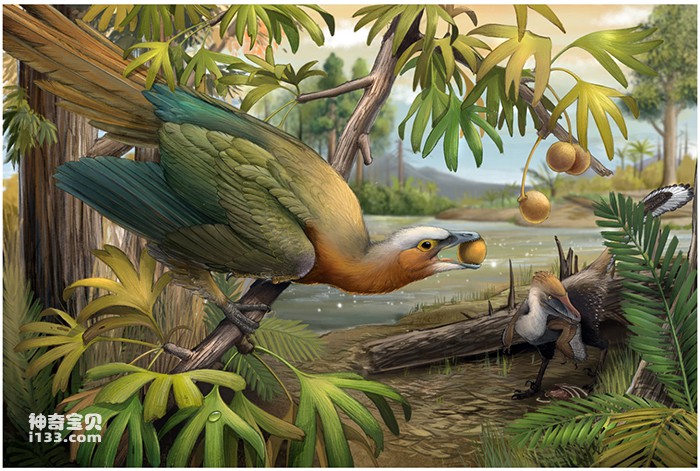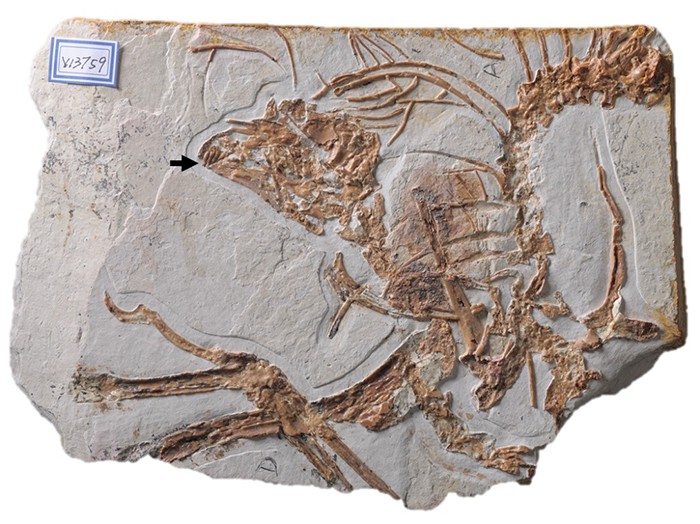How birds, the descendants of dinosaurs, escaped the mass extinction event 65 million years ago has always been a question that scientists are eager to answer. A large amount of volcanic ash caused by meteorites impacting the earth and frequent volcanic activities filled the atmosphere, causing the earth to remain dark all year round. Plants that relied on photosynthesis died in large numbers, further causing the herbivorous dinosaurs to lose their main food source, and eventually led to the destruction of the top of the food chain. Carnivorous dinosaurs such as Tyrannosaurus rex became extinct one after another. Why did birds survive this extinction event caused by the collapse of the food chain?
On April 21, the academic journal "BMC Evolutionary Biology" published online the research results jointly completed by the Li Zhiheng team of the Institute of Vertebrate Paleontology, Chinese Academy of Sciences, and the Synchrotron Radiation Research Center and other cooperative units. The dental evolution characteristics of ancient birds were discussed, revealing that the difference in feeding habits between birds and dinosaurs was probably the key to their ability to avoid catastrophes and survive to this day.

Figure 1 Ecological restoration scene of herbivorous ancient birds (left) and small predatory dinosaurs (right). Mesozoic birds, which lived in the same ecosystem as carnivorous dinosaurs, evolved different feeding habits, such as herbivory, which mainly feeds on seeds and fruits, and omnivory, which feeds on small insects, avoiding direct contact with carnivorous dinosaurs. Dinosaur competition for food. (Drawing by Zheng Qiuyang)

Figure 2 Fossil specimens of ancient birds from the early Cretaceous period - Ornithus. Collected at the Institute of Vertebrate Paleontology and Paleoanthropology, Chinese Academy of Sciences. (Black arrows mark tooth positions). (Photo provided by Li Zhiheng)
The research team used synchrotron radiation high-resolution transmission X-ray microscopy to examine small non-avian dinosaurs—including Troodon, Anchiornis, Microraptor, and ancient birds (see Figure 2)—including modern birds. Comparative observation and study of the microstructure of the teeth of Enantiornithes, Enantiornithes, and Jeholornithnis and Jeholornithnis revealed that although the simple enamel layer was preserved in early ancient birds, the porous hood between the enamel and dentin was The intrinsic layer (shown by IGS in Figure 3) has disappeared, and the porous mantle dentin layer is considered to be a special shock-absorbing protection developed in the teeth of carnivorous dinosaurs to prevent their teeth from breaking during predation. structure. Not only among ancient birds, the mantle dentine layer of a Microraptor specimen studied in this study has also disappeared. This means that the teeth of birds and some closely related dinosaurs no longer require special mechanical protection structures; it indirectly confirms that their eating habits, such as bite force and predatory nature, are greatly different from carnivorous dinosaurs. By changing their diet, they avoided competition with carnivorous dinosaurs for food niches, greatly improved their adaptability, and were able to survive the most difficult moments. Compared with the universal herbivorous or omnivorous evolutionary trend of ancient birds, although a few groups of non-avian dinosaurs, such as Microraptor, have also undergone convergent evolution, it is still difficult to avoid the crisis of extinction.

Figure 3 The internal microstructural evolution of the teeth of ancient birds and small non-avian theropod dinosaurs in the Cretaceous (a-Troodon, b-Anchiornis, c, d-Microraptor, e-Enantiornis indeterminate species, f -Birds of today, g-winged bird, h-bird). High-resolution synchrotron radiation microscopy images show that the porous hood dentine (IGS) in teeth has disappeared in ancient birds and Microraptor, providing evolutionary evidence of dietary transformation. (Photo provided by Li Zhiheng)
animal tags:
We created this article in conjunction with AI technology, then made sure it was fact-checked and edited by a Animals Top editor.